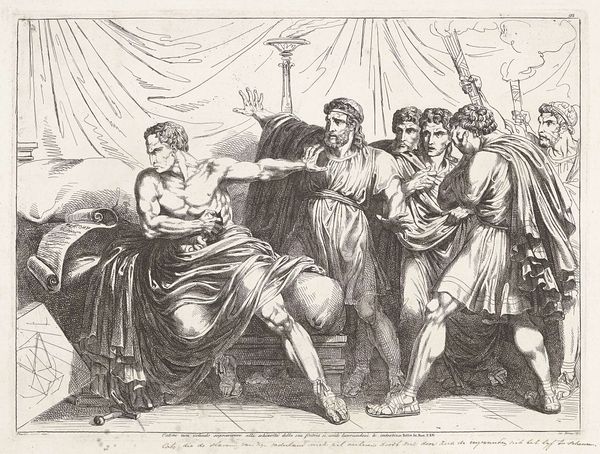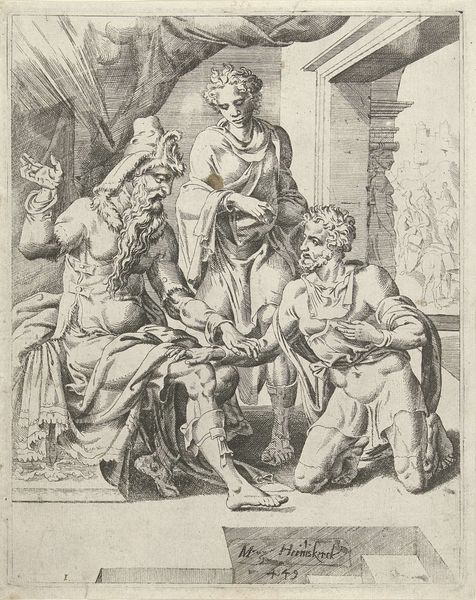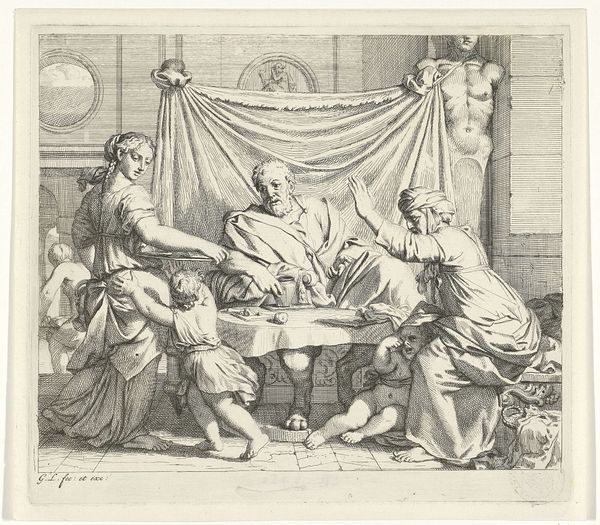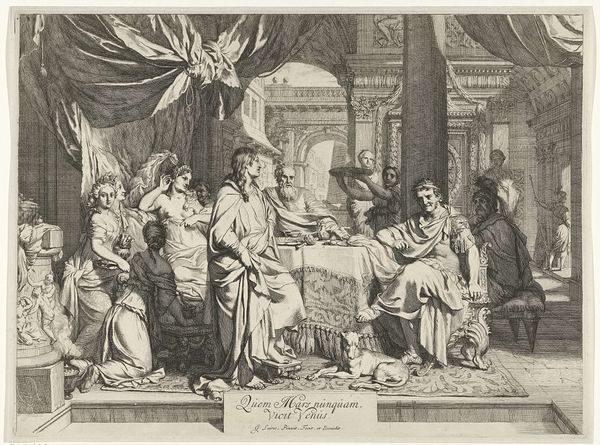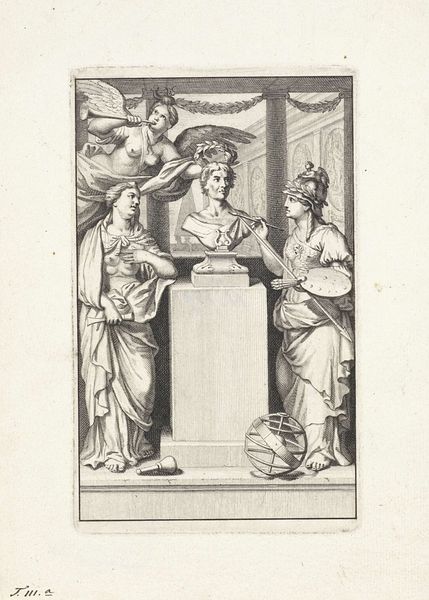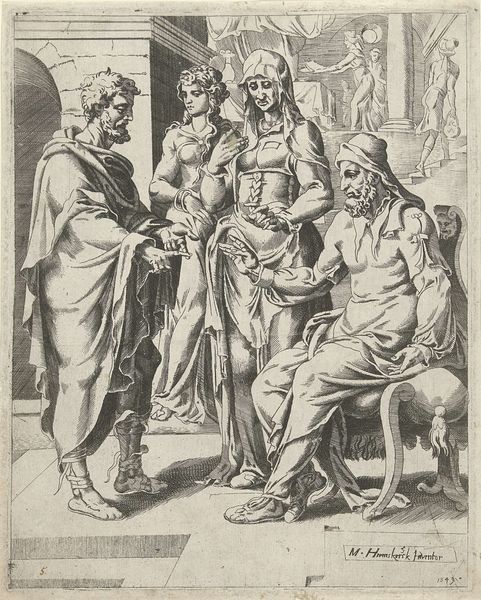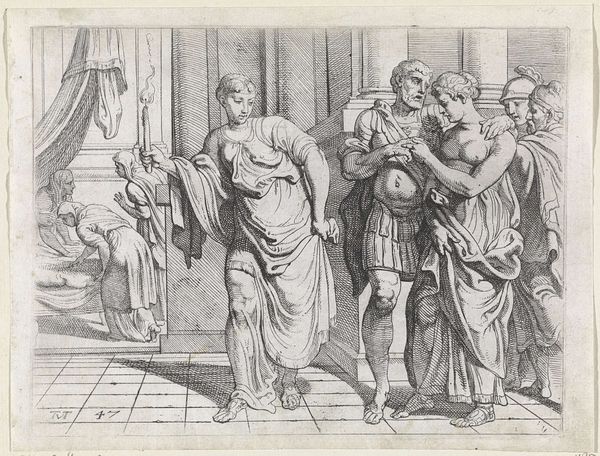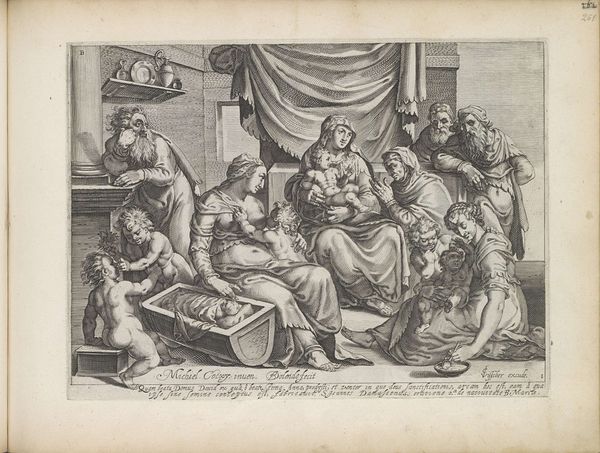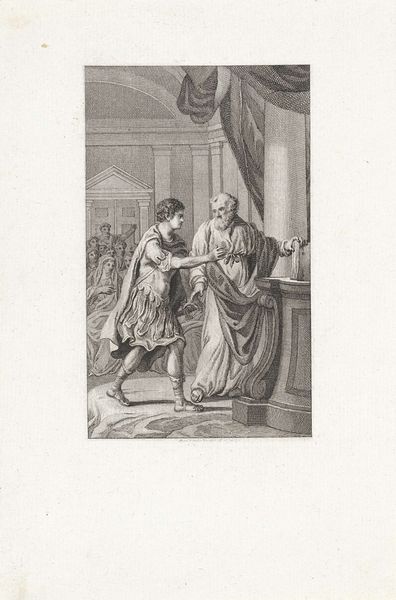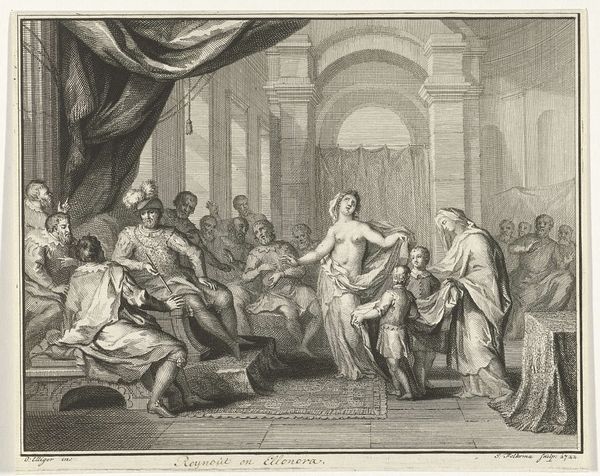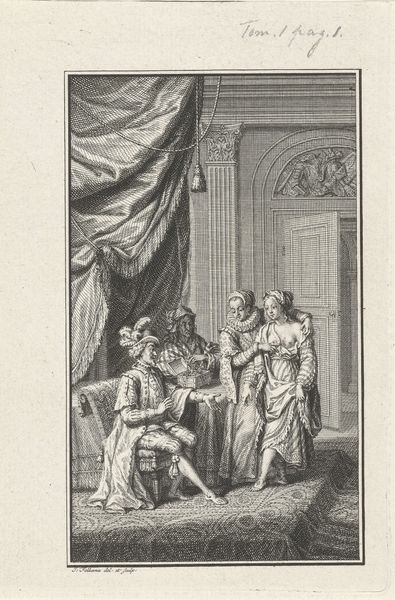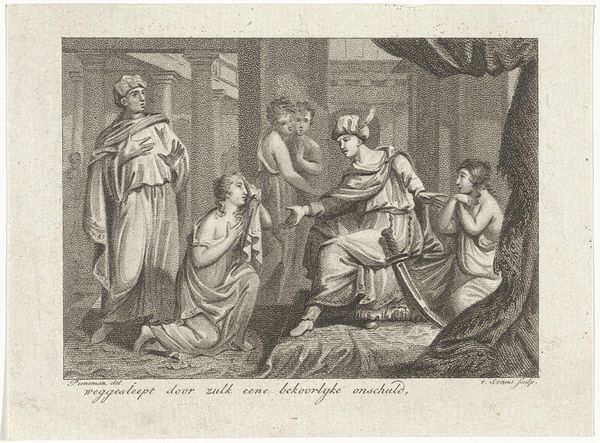
Fulvia steekt met een naald in de tong van het afgehakte hoofd van Cicero 1819
0:00
0:00
intaglio, engraving
#
portrait
#
neoclacissism
#
light pencil work
#
quirky sketch
#
narrative-art
#
intaglio
#
pencil sketch
#
sketch book
#
figuration
#
romanesque
#
personal sketchbook
#
idea generation sketch
#
sketchwork
#
sketchbook drawing
#
pencil work
#
history-painting
#
storyboard and sketchbook work
#
engraving
Dimensions: height 315 mm, width 424 mm
Copyright: Rijks Museum: Open Domain
Editor: This intaglio print, "Fulvia steekt met een naald in de tong van het afgehakte hoofd van Cicero," was created in 1819 by Bartolomeo Pinelli. The scene is stark. It definitely evokes a strong sense of brutality. How do you interpret this work? Curator: This image depicts Fulvia, wife of Mark Antony, enacting a brutal act of revenge on the severed head of Cicero. Considering its creation in 1819, during a period of Neoclassical revival alongside burgeoning Romantic sentiments, we must consider this not just as an isolated historical depiction, but as a commentary on power, gender, and political retribution. What does Fulvia's action, specifically targeting the tongue, suggest to you about the perceived power of rhetoric and its silencing? Editor: Well, Cicero was a famous orator. By piercing his tongue, Fulvia is literally silencing him, even in death. It’s like she's negating his influence, asserting her power in a male-dominated world. Curator: Precisely. Fulvia’s act, while horrific, can be viewed through the lens of feminist theory as a transgressive act against patriarchal authority. Pinelli, perhaps unintentionally, captures the complexities of female agency in a historical context where women were often denied direct political power. This engraving demands we question the accepted narratives of history. What are we to make of her act? Is she merely vengeful, or is she making a larger political statement? Editor: I hadn’t considered it that way before. Thinking about it in terms of silencing and power dynamics definitely adds a layer of complexity I hadn't initially grasped. Curator: Indeed. It challenges us to consider the historical context of both the depicted event and the moment of the artwork's creation, and further question the multifaceted motivations behind actions deemed ‘barbaric.’ We must acknowledge that what history paints as savage acts may have deeper political roots.
Comments
No comments
Be the first to comment and join the conversation on the ultimate creative platform.
